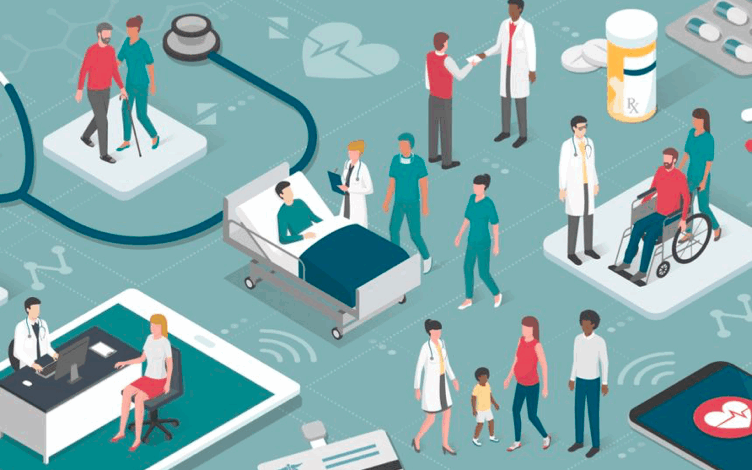
Just as soldiers protect a nation from external threats, doctors safeguard our bodies from diseases. The adage “Vaidyo Narayana” (Doctor is God) alone speaks volumes about their greatness. Medicines cure ailments, but only doctors heal patients. True physicians often set aside their personal lives, putting on a brave smile despite their own struggles, listening to patients’ woes, and bringing them relief. They are indeed akin to deities. Our gratitude also extends to their teachers, who imparted such noble knowledge. Doctors often risk their lives in their profession; a prime example being the COVID-19 pandemic, where, even as relatives kept their distance, doctors risked everything to save millions of lives. Sadly, many succumbed in this noble endeavor.
National Doctors’ Day- Honoring Dr. B.C. Roy’s Legacy:
National Doctors’ Day, observed annually on July 1st in India, marks the birth and death anniversary of Dr. Bidhan Chandra Roy. This day celebrates and acknowledges the crucial roles and responsibilities of doctors in the nation. Its objective is to recognize the invaluable humanitarian contribution of doctors to mankind. Born in Patna, Bihar, on July 1, 1882, Dr. B.C. Roy completed his medical graduation in Kolkata and pursued higher education in London. He began his medical career in India in 1911, later joining Calcutta Medical College as a faculty member.
He was not only a renowned physician but also a distinguished academician and a freedom fighter who worked alongside Mahatma Gandhi during the Civil Disobedience Movement, serving as Gandhi’s personal physician. He also served as the second Chief Minister of West Bengal, providing selfless medical service. Dr. Roy was instrumental in establishing institutions like the Chittaranjan Cancer Hospital, Kamala Nehru Memorial Hospital, a TB hospital in Jadavpur, and the Chittaranjan Seva Sadan for women and children in 1926. He passed away on July 1, 1962, after 80 years of remarkable service to the nation. In his memory, the Dr. B.C. Roy National Award was instituted in 1962, and the Dr. B.C. Roy National Award in 1976. The nation also honored him with its highest civilian award, the “Bharat Ratna.”
While dedicated doctors like Dr. B.C. Roy continue to serve tirelessly, it is disheartening to see that the unethical practices of a few tarnish the entire medical profession. With the corporatization of healthcare, medical treatment has become exorbitantly expensive. It’s an open secret that patients are often subjected to unnecessary diagnostic tests, with doctors, labs, and even medical stores allegedly taking commissions. There’s a disturbing trend of prioritizing C-sections over natural deliveries for pregnant women. Furthermore, some doctors working in government hospitals, despite drawing salaries, are reportedly neglecting their duties there to run private practices, driven by a thirst for commissions.
*India’s Health Challenges- A Call for Action:
India faces significant health challenges, housing a large number of people suffering from various ailments, including obesity, cancer, diabetes, heart diseases, and organ-related disorders. Irregular eating habits, excessive consumption of non-vegetarian and junk food, lack of exercise, insufficient sleep, and sedentary jobs are key contributors. A concerning rise in tobacco and alcohol consumption among youth is leading to lung, liver, and kidney damage, increasing cancer risks. Environmental factors like air pollution from growing construction, factories, and vehicles are escalating respiratory illnesses such as asthma and bronchitis. Water pollution and consumption of untreated water are also contributing to a rise in stomach-related diseases. While governments are striving to mitigate health problems within their purview, for instance, the Indian Space Research Organisation (ISRO) launched a telemedicine project to extend services to remote areas.
Currently, India has 74,306 postgraduate seats and 1,18,190 MBBS seats. According to the National Medical Commission (NMC), there are 1,386,150 registered allopathic doctors. The Ministry of AYUSH reports 751,768 registered practitioners in the AYUSH system. Assuming 80% availability, the doctor-population ratio is estimated at 1:811. To improve this ratio, the government has taken several measures, including the Centrally Sponsored Scheme for establishing new medical colleges (131 functional out of 157 approved), strengthening existing state/central government medical colleges to increase MBBS and PG seats, and completing 71 out of 75 approved Super Specialty Blocks under PMSSY. Additionally, 19 out of 22 approved AIIMS have commenced undergraduate courses.
To enhance doctor availability in rural and remote areas, the Family Adoption Programme (FAP) has been incorporated into the MBBS curriculum, involving medical colleges adopting villages and students adopting families. The District Residency Program mandates second/third-year PG students to be posted in district hospitals. Specialist doctors serving in rural areas receive hard area allowances and residential quarters. Gynaecologists, paediatricians, and anaesthetists providing services in rural areas are given honorariums. Special incentives are provided for doctors and ANMs ensuring timely ANC check-ups and adolescent reproductive and sexual health activities. States are also allowed to offer negotiable salaries to attract specialists, including “You Quote We Pay” strategies. Non-monetary incentives under NHM include preferential admission in postgraduate courses for staff serving in difficult areas and improved rural accommodation. Multi-skilling of doctors is also supported under NHM to address specialist shortages.
*Solutions for a Healthier India:
To combat these challenges and foster a healthier society, individuals must prioritize timely meals, reduce meat consumption, abstain from alcohol, and regularly engage in exercise, yoga, and breathing exercises. Emulating developed nations, adopting health insurance in India can provide crucial support during emergencies. This will not only secure individual health but also lay a stronger foundation for the nation’s healthcare system.











